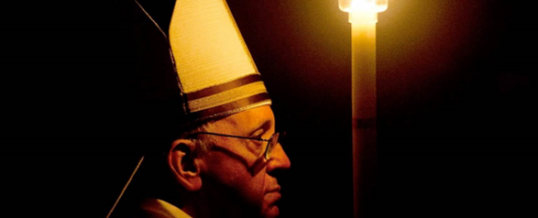
Christmas and Easter are the high points of the liturgical year for Christians. No doubt about it. Yet, they are not stand-alone holidays. Christmas and Easter are part of a pattern which looks like this: prepare-celebrate-savor.
In Advent, we prepare for the birth of Christ. At Christmas we celebrate Jesus’ coming. And since the coming of Christ into our world is so important, we need to savor it until the last day of the Christmas Season, that is, until the Feast of the Baptism of the Lord.
Easter offers us that same pattern of preparing, celebrating, and savoring. During Lent, we prepare our minds and hearts to enter into the passion, death, resurrection, and ascension into glory of Christ. Easter is the celebrating of Christ’s victory over sin and death. And again, since Easter is such a central and significant feast, we need to savor it for 50 days. This year we close out the Easter Season, our savoring comes to an end, on Pentecost Sunday, May 28th. Liturgically, one of the ways we mark the end of the Easter Season is by returning the paschal candle to its place next to the baptism font. From the lighting of the paschal candle during the Easter Vigil until Pentecost, those 50 days of Easter, the paschal candle has been displayed in the sanctuary with honour.
During those 50 days in the sanctuary, the paschal candle reminds us of the resurrected Christ, the Light of the world. Returning it to its “normal” place next to the font for the rest of the year is not a demotion. We are not relegating it to a less significant place within the church building nor are we downgrading its purpose or power. By placing the paschal candle next to the font, we are reminding ourselves that each time we gather for Sunday Eucharist, we gather around the resurrected Christ. His power, his victory over suffering, sin, and death are just as real and vigorous on the 13th Sunday of Ordinary Time as it is on Easter Sunday itself.
The placement of the paschal candle, both in the sanctuary and later adjacent to the baptismal font, remind me of the words of St. Paul. When he wrote the following words to the people of Corinth, I’m sure they came from his own personal reflection on the resurrection of Christ. Paul writes: “Death, where is your victory? Death, where is you sting?” (1 Cor. 15:55). The answer to both of these questions is a resounding NOWWHERE! To paraphrase Paul, he is taunting death by implying, “Death, is that all you have got? If that’s all you got, you’re not much!”
The next time you participate in a baptism in your parish, notice the paschal candle. From it, a baptismal candle is lit and handed to the newly baptized with the word, “You have been enlightened by Christ, walk always as a child of the light.” Behind those words, I hear St. Paul speak, “Death, is that all you’ve got? You have no lasting power in the life of this newly baptize one.”
Similarly, the next time you participate at a funeral in your parish, notice the paschal candle next to the font. It will be lit. If the paschal candle could speak to the casket or urn of the deceased person, it would speak Paul’s words again: “Hey, Death. Where is your victory? Where is your sting? Is that all you’ve got? You have no lasting power over our deceased brother/sister.”
No matter where the paschal candle is—in the sanctuary or next to the font—let’s savor its meaning. Christ is Risen! Darkness has been defeated. Easter is forever.
Fr. Phil Mulligan
APR
2023

About the Author: